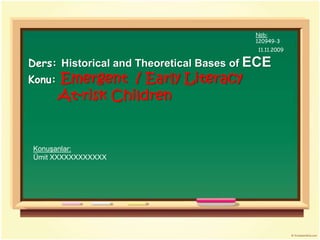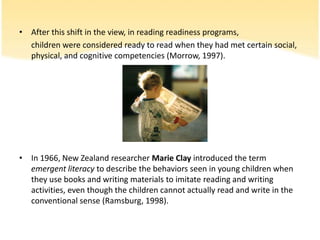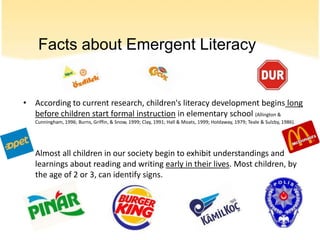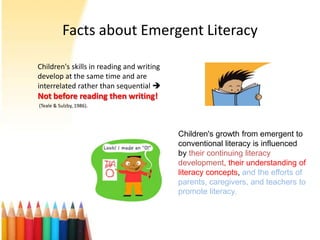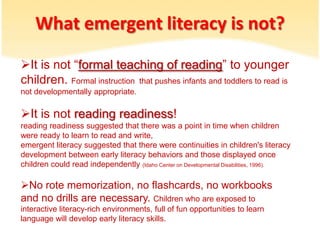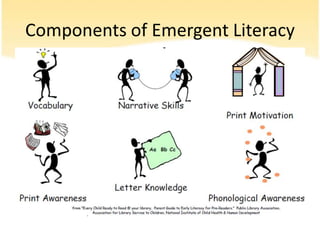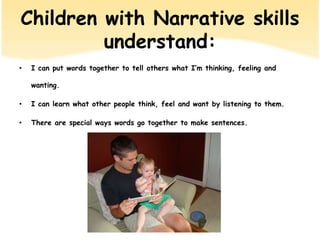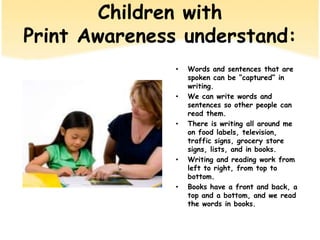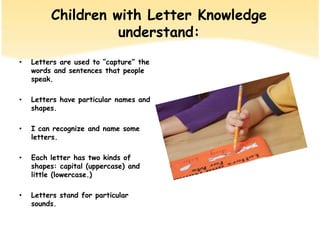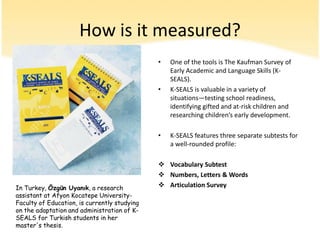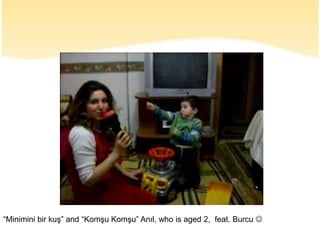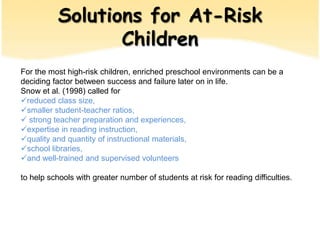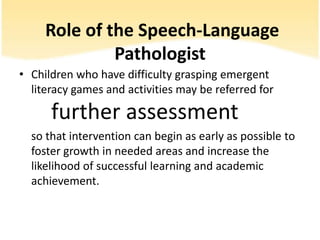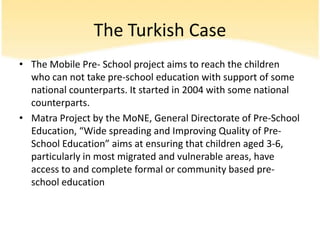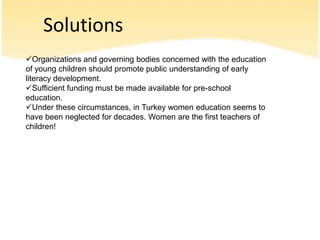This document discusses emergent literacy and its importance for early childhood development. It defines emergent literacy as the early skills, knowledge, and attitudes that are developmental precursors to conventional reading and writing. These include vocabulary, narrative skills, print motivation, print awareness, letter knowledge, and phonological awareness. Emergent literacy begins at birth and is fostered through social interactions with caregivers and exposure to literacy materials. Children who start school without having developed early literacy skills are at higher risk for later reading difficulties. The document also discusses tools for measuring emergent literacy skills and provides recommendations for parents, teachers, and organizations to promote early literacy development.
